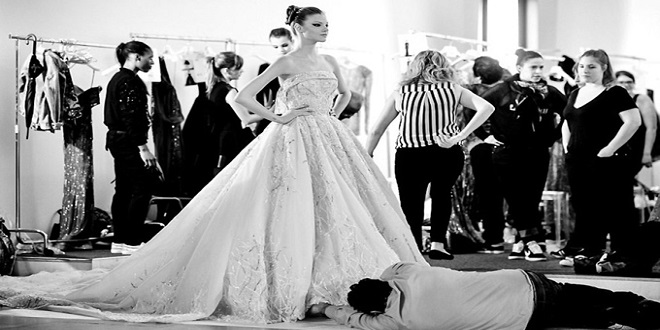
Fashion has always been an immediate barometer of culture and of the preoccupations and interests that mark an epoch or period.
The rise of haute couture
Notions of Taste Elitism in fashion has always been linked closely with status and social class, with success, and with what was perceived to be impeccable taste made publicly visible through the dress. For centuries, royal courts used fashion as a means of publicizing their superiority, strength, and influence across Europe. Louis XIV, for example, demanded that his courtiers pay scrupulous attention to their grooming, and insisted on the conspicuous display of fi nery at all palace events.
He maintained a mental inventory of the garments worn by the female members of his entourage to ensure that his reputation was not tarnished if one was seen wearing the same garment too frequently. He believed that this form of dress code upheld the exclusivity of his court. Prior to the twentieth century, the established canons of taste in the arts— including fashion—were once considered to be the exclusive priority of aristocrats.
While cultural debate questioned the extent to which other groups, notably the haute bourgeoisie and the demi-monde, played a part in establishing these canons, in his essay ‘The Aristocracy of Culture’ Bourdieu refers to ‘an object like the taste’ as one of the most vital stakes in the struggles fought in the fi eld of the dominant class and the fi eld of cultural production. Bourdieu explains that: ‘The upper-class propriety treats taste as one of the surest signs of true nobility and cannot conceive of referring taste to anything other than itself (1984: 11).
By linking cultural practice to the social origin, Bourdieu emphasizes the discrete nature of ‘the games of culture’ between the upper-class intellectuals and the bourgeois, in which their ‘self-interested representations of culture’ provoke ‘mutual lucidity and refl active blindness’ (1984: 12). Bourdieu’s observation could equally be applied to 6 A CULTURAL HISTORY OF FASHION IN THE 20TH AND 21ST CENTURIES.
Britain in the late nineteenth century, when the artist/craftsmen and the industrial manufacturers rarely compromised their opposing ideologies. This schism not only widened with the growth of mechanical reproduction and the mass production of artistic goods, including fashion but was also further accentuated by the emergence of a commercially minded middle class, encouraging the emergence of a new, non-elitist direction in the decorative arts.
However, for Ruskin—the influential mentor of the Arts and Crafts movement—art was inextricably linked with morals rather than with trade, and ironically he purportedly passed on to generations of Englishmen the dogma that quality could not be separated from rarity. Bayley’s seminal essay, ‘Commerce and Culture, argues that the social and technical upheavals brought about by mass production were the ‘stigmatization.
Charles Frederick Worth
At the same time, a new dictatorial hierarchy arose with the birth of haute couture in the second half of the nineteenth century. Ironically, with the rise of the concept Henri Gervex, 5 o’clock chez Paquin, 1906. Haute couture clients inspect fabric samples and view a garment being modeled by a young woman in the background.
8 A CULTURAL HISTORY OF FASHION IN THE 20TH AND 21ST CENTURIES ‘fashion designer as artist/genius’—as distinct from the humble dressmaker or couture à façon—a new form of elitism in fashion replaced the old. This time, however, it was one determined by pecuniary rather than class dominance. Fashion historian Christopher Breward (2003) argues that this elite sector of the fashion market relied on an exclusivity necessary to sustain high prices through a deliberate glorification of the role and identity of the couturier.
Last word
He concludes that: ‘Fine hand-sewing, bureaucratic control, and creative vision, then, underpinned the success of a couture house’ (2003: 50). Haute couture demanded labor-intensive specialized sewing techniques, sustained by high prices.




